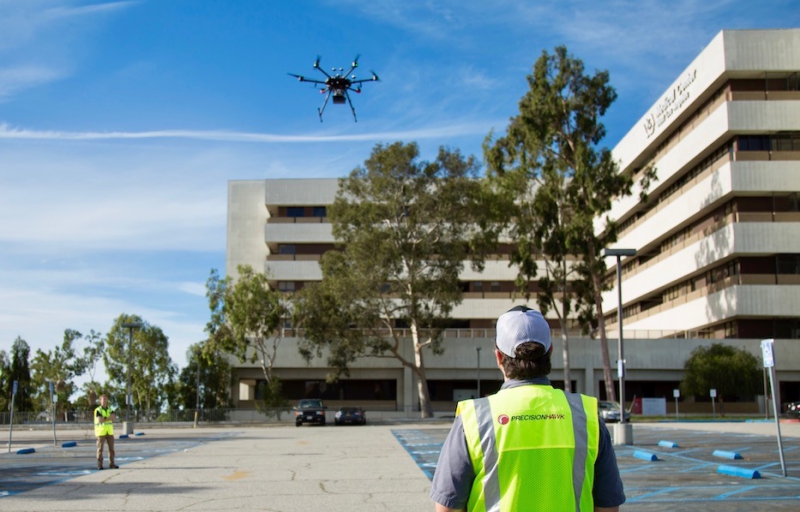, has announced that it has been awarded two patents for technologies it has developed for unmanned aircraft system traffic management (UTM). The patents, titled ‘Automated Unmanned Air Traffic Control System,’ are designed to enable collision avoidance between drones and manned aircraft. This is achieved by transmitting real-time flight data from drones to a UTM server prior to and while in-flight.
In order to safely fly drones long distances, operators must be able to avoid collisions with other drones and manned aircraft. The first patent is for technology that allows drones to send real-time telemetry to flight servers to avoid collisions while in the air. The second patent helps drone operators avoid collisions by transmitting their flight plan to a traffic management server prior to a flight to see if there is a potential for flight conflicts. The traffic management server receives similar data for other drones and manned aircraft. If there is potential for collision, the traffic management server sends an alert to the drone so the operator can adjust the flight plan.
PrecisionHawk was an early pioneer in the UTM space. In 2015, the company introduced LATAS, the Low Altitude Tracking and Avoidance System. LATAS was designed to provide flight planning, tracking, and avoidance for every drone in the sky using real-time flight data transmission based on existing worldwide cellular networks. PrecisionHawk researched and developed LATAS to show that integrating drones into the National Airspace (NAS) could be done safely, which would enable broad drone operations. These new patent awards are the latest in PrecisionHawk’s long history of unmanned aircraft systems (UAS) innovations that have helped industry unlock the potential of commercial drone operations in the U.S.
PrecisionHawk, as the lead institution on the FAA’s Pathfinder Program (Focus Area Two), was responsible for conducting research to determine operational strategies and technology solutions for beyond visual line of sight (BVLOS) operations. The Pathfinder research was responsible for PrecisionHawk receiving the first nationwide BVLOS waiver.
“It’s clear that the more you know about the real-time environment you’re operating in, the more safely and efficiently you can operate,” said Dr. Allison Ferguson, PrecisionHawk Director, Airspace Research. ”The more important question is how does a drone operator reliably get that situational awareness? What information is needed and when? LATAS was a key enabling technology for the Pathfinder efforts, which were aimed at determining answers to precisely those questions.”
The value of drones is on display across industries, including search and rescue, infrastructure inspection and analysis, and delivery of life-saving medicines and essentials. In order to realize the humanitarian and economic benefits of drone technology in a safe and secure manner, a robust, automated UTM system must be in place to handle the expected traffic with remote identification to identify UAS. The manned air traffic control system will not be able to scale to meet the needs of UAS operations and the burgeoning urban air mobility (UAM) industry. PrecisionHawk’s latest patents will contribute to the efforts to bring a safe, secure UAS traffic control system online.
“The use of drones is becoming more ubiquitous across a number of enterprise industries. UTM is a critical piece of infrastructure that will enable more types of drone operations as the industry continues to grow and more complex operations, such as broad BVLOS, become needed,” said Tyler Collins, PrecisionHawk Vice President, Enterprise Accounts, and inventor of the technology. “We see UTM being born out of necessity just as the current air traffic control system was in the 1930s. UTM is a natural next step to ensure safety of the airspace and those who share it.”
Source: Press Release

